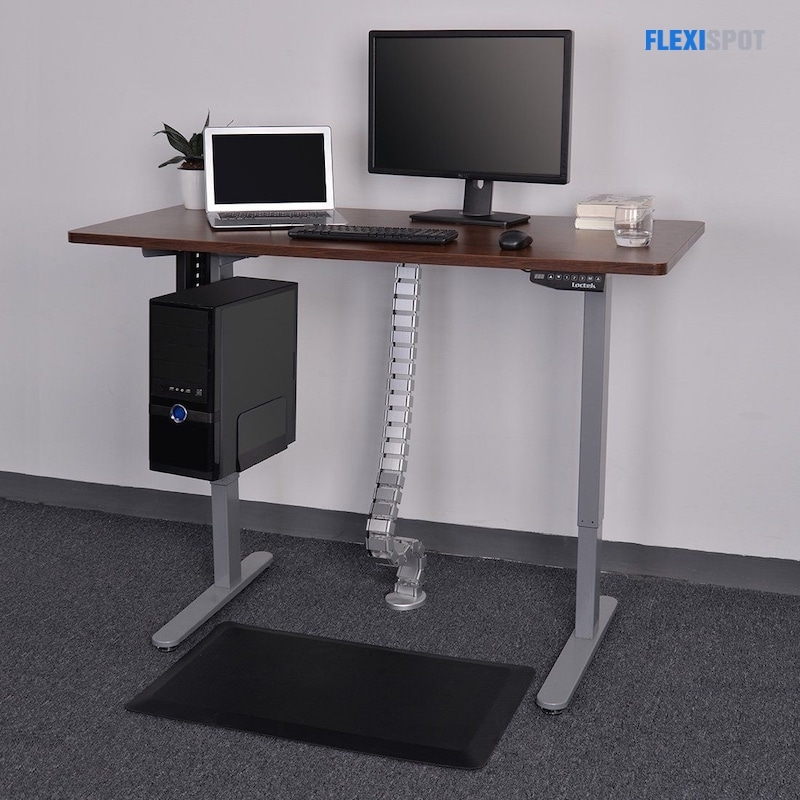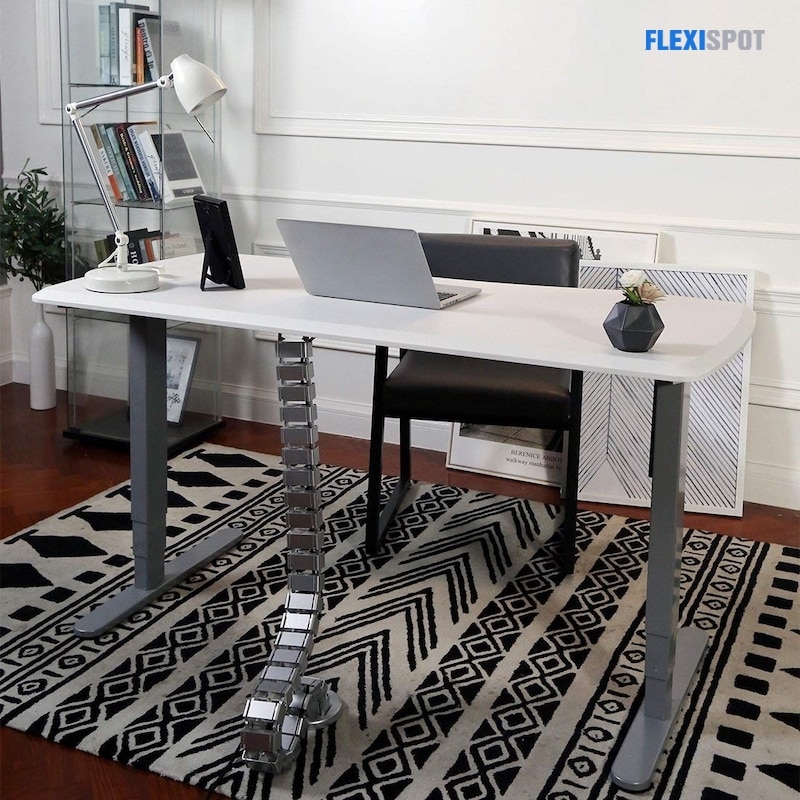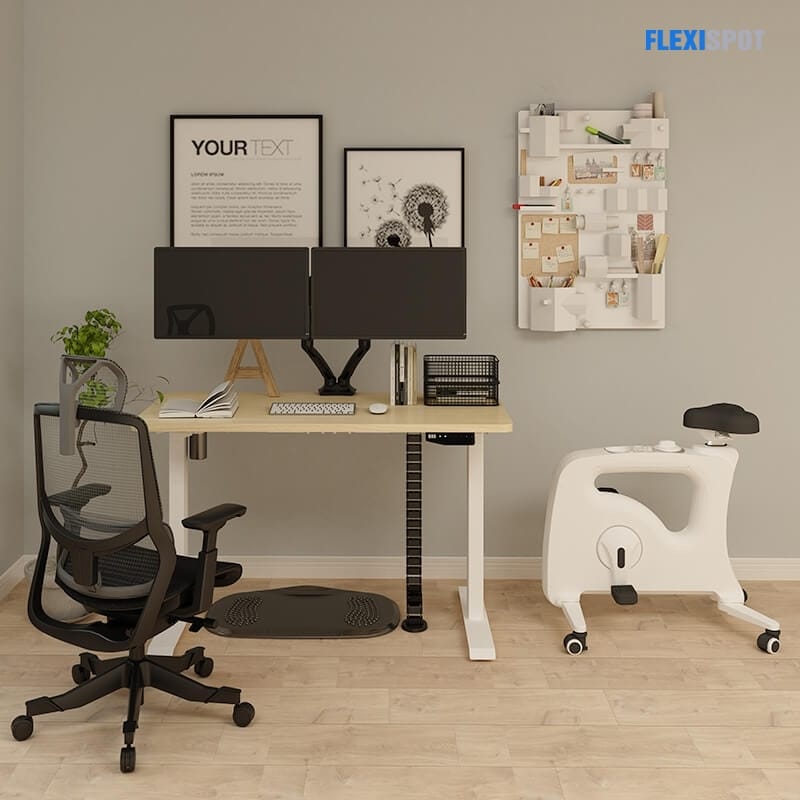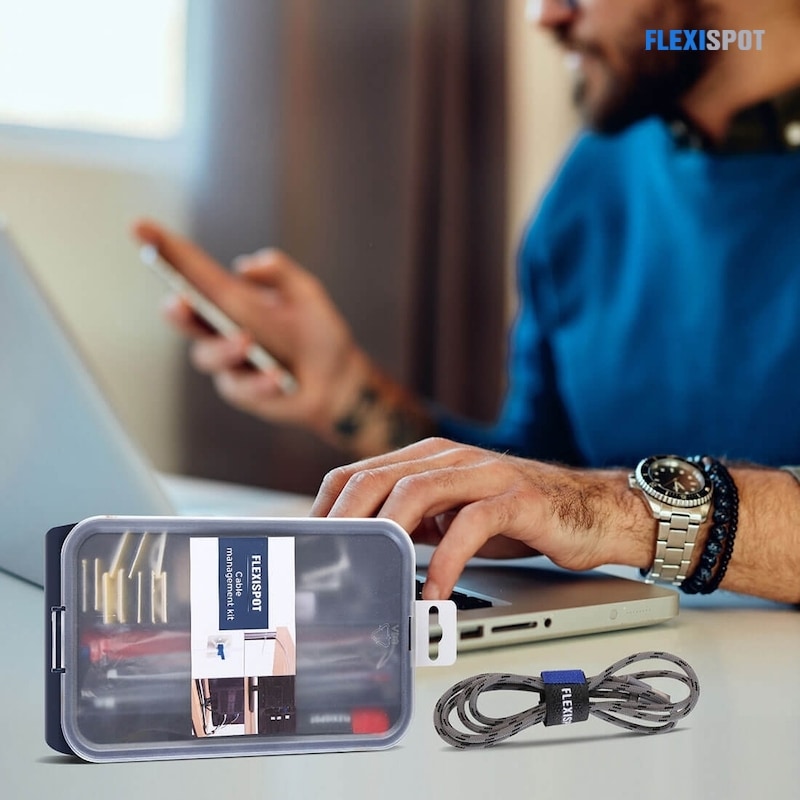There's no shortage of things to handle when running a company: time, people, productivity, finances. Cable management is the ideal answer for keeping connections safe, functional, and organized, as almost every organization relies on them for essentials like data and energy.
Most people's desks are overflowing with items other than a lamp and a typewriter. All of these items have cables: computers, monitors, lights, phones and chargers, printers, etc. It may appear that keeping the cords under your desk organized is a tedious effort. On the other hand, these wires are out of sight and out of mind until you need to remove something or have a technical issue.
The modern workstation is plagued by cable clutter. We're doing our best to go wireless as much as possible, but there are still a lot of cords snaking everywhere. The charging cord clutters any work environment for your phone and laptop, USB hubs, mice, and other items. It's time to handle computer cords on and beneath your desk.
How Does Cable Management Benefit You?
Safety First
As the owner or operator of an organization, it is your responsibility to keep the premises up to modern standards and safe for employees and consumers. Use floor cord coverings to anchor foot-snagging to the floor to avoid cable-related risks such as tripping hazards. Cord coverings provide two benefits: they save necessary wires from being trampled underfoot by pedestrian traffic and avoid tripping workplace hazards.
Reduce Lost Time and Frustration
We've all wanted to rip our brains out in anger when untangling and distinguishing between computer connections at some point. When it's time to upgrade or maintain networking gear, the last thing you want to do is rummage through a maze of indistinguishable cables to identify the one you need. Wire indicators and label printers remove the uncertainty by clearly labeling each cord, allowing you to devote your time (and composure) to more important duties.
Neat and Clean Work Environment
Take a closer look under your desk: nothing attracts dust like a mess of connections. Those dust balls aren't likely to help your company, but they will make you sneeze. Unwanted cord length can be addressed with a product like FlexiSpot's Cable Spine CMP017, which keeps cables off the floor, making cleaning easier and preventing dirt from accumulating in the first place.
Save Money
Cable management may help you not only keep your office tidy and clean, but it can also help you increase the performance and durability of your cables. Crushing and sagging are likely to occur if cords are left to heap up on the floor or dangle slack behind machines. You may avoid having to spend more on new network connections by implementing a cable management system at your workplace.
Better Client Impression
Always keep in mind that first impressions matter a lot in business! Even if you're excellent at what you can do, a crowded and unorganized workstation can offer the wrong impression to potential business partners. An office full of tangled cables makes you appear lousy, so if you're expecting customers or potential clients to drop by, invest in a cable management system and give your best.
How to Organize Cables
The ideal strategy to optimize desk cable management depends on the type of desk you have, how it integrates with your space, and the equipment you operate with or play with. Some of the solutions below are more applicable to some persons than others.
Conceal the Power Strip and Plugs
The purpose of a power strip is to provide power, not to look attractive. Yes, a surge protector should be used, but the resulting tangle of cables is ugly. That's where you should begin your workspace cable management. The most basic cable management solution is to make a DIY power strip box out of a box.
Tie Cables Together
Let's deal with the several unsecured cords now that the power strip is managed. Start with identifying the cables that will remain in place indefinitely or for an extended time. For under-desk cable management, gather them all together and bundle them neatly.
Make sure your cables are nicely sorted, then gather them and zip tie them together. It's ideal to use zip ties at several points along the path from the power strip to the desk or PC, so they stay clean. Zip ties can also be used to keep cables organized inside desktop computers.
Wire sleeves are preferable to zip ties for desk cable management since they allow you to add semi-permanent cords. A cable sleeve with a velcro or zipper closure keeps all of your connections together and allows you to add or remove cords simply.
Reduce Cable Length
The cords on the desk may remain a problem. You need them, but you do not need them to occupy a lot of territories. The solution is to shorten their length momentarily. The cablebone is a low-cost DIY option. A rubber mat, cutter, glue, a marker pen, and a drill are all necessary. On a rubber pad, draw small bone shapes, cut them out, and glue two up. The finished rubber bone should be about a quarter-inch thick. Drill holes in the bone at both ends and trim it slightly to allow a cord to pass through. Wrap the string around the bone from one end to the other, coiling it as tight as possible.
Keep Unused Cables In Place
Your phone charger will not always be connected to the device. As a result, it rests on the desk, accumulating clutter and becoming intertwined with other cords. If you want to have good desk cable management, you should keep all your unneeded wires in one area. Cable clips may be mounted on a desk or a wall, and any cables with a diameter of up to 6mm can be fed through it. It's excellent for organizing headphone cables, power cords, and other vital cables that wind their way around your desk daily.
Cable Identification
While you're cleaning up the mess, this bunching makes it challenging to tell which cable accomplishes what. Bread clips seem to be the most popular cable management method. Connect one to a cable and make a note of what that is for. Wrapping colored tape around the line with a small amount exposed is the quickest approach to distinguish cables. Use a sharpie to write what the cable is for on the protruding section. Put a slip of paper there and write the identity again to ensure the back doesn't cling somewhere. It may not be attractive, but it is the most practical option.
Product Recommendation
Cable Management Kit Organizer Set CMP013
FlexiSpot created the ultimate cord management system so you can take on even the most terrifying octopi. Simply tie the cables together, put the sleeve around the cords, and secure.
This bundle includes 50 PCS cable ties, 10 PCS cable identifiers, 10 PCS cable tie bases, and 5 PCS velcro ties to suit your everyday use demands. The plastic container box can then be used to hold additional tiny objects after you've used the clips.
Self-adhesive cable tie bases are composed of high-quality, pliable, and lightweight materials. The adhesive included is long-lasting and can help you secure your base more securely.
Eliminate those pesky power cords, HDMI cables, and other cables quickly and completely. This product is designed to be simple to use right out of the box.
Tidy up a significant mess of cords in your home office, workplace, dorm room, home entertainment center, car, and school, which is terrific for your messy house and gives you and your family a more safe zone.
Click here to get your own FlexiSpot Cable Management Kit Organizer Set CMP013!
Whether you like to move stuff about a lot or don't spend much time under your desk, arranging your cords provides many benefits. Decreasing the number of cables, gathering spare wires, and devising new ways to organize and label your connections are all simple, efficient, and cost-effective strategies to improve your under-desk cable management.



